With a resounding 89% of marketers acknowledging the positive impact of personalization on their campaigns, the significance of email personalization in the realm of digital marketing cannot be overstated. This statistic serves as a testament to the effectiveness of tailoring content to individual preferences. Email personalization emerges as the secret weapon in the arsenal of email marketing, capturing and maintaining the attention of the modern consumer. Notably, 47% of customers express a predilection for brand emails that consistently deliver relevant and customized messages, reinforcing the pivotal role of personalized content in engaging audiences.
In this article, we delve into the crucial realm of email personalization, unraveling its growing importance in the dynamic landscape of digital marketing. We will explore the core principles of email personalization, elucidate its role in contemporary consumer expectations, and provide actionable strategies and tactics for successful implementation.
As we navigate through these insights, readers will gain a comprehensive understanding of what makes email personalization indispensable in crafting impactful marketing campaigns. The purpose of this article is to equip marketers with the knowledge and tools to harness the power of email personalization effectively, enhancing their campaigns and fostering stronger connections with their target audience.
What is email personalization?
Email personalization, a nuanced practice within the realm of digital communication, goes beyond the generic approach of casting a wide net. It involves the meticulous curation and delivery of customized emails tailored to specific customer segments. At its core, this strategy hinges on the utilization of customer data to craft messages that are not only pertinent but resonate with the individual interests, behaviors, characteristics, and preferences of the recipients. The effectiveness of email marketing personalization is inherently tied to the depth and accuracy of the customer data at the disposal of businesses.
In essence, email personalization transcends the conventional approach of one-size-fits-all marketing. Unlike generic emails that cast a broad net with uniform messages, personalized emails delve into specialization and individualization. The content team orchestrates a deliberate customization process to create resonance with distinct groups of recipients by directly addressing their current pain points. This level of granularity ensures that each email becomes a tailored communication piece, fostering a sense of connection and relevance that generic campaigns often struggle to achieve.
Moreover, the dynamic nature of email personalization necessitates an ongoing commitment to understanding and adapting to the evolving preferences and behaviors of the target audience. This iterative process involves constant refinement and optimization based on real-time insights derived from customer interactions. Essentially, email personalization is a responsive strategy that places a premium on staying attuned to the ever-changing landscape of consumer expectations and market dynamics.
Why is email personalization important?
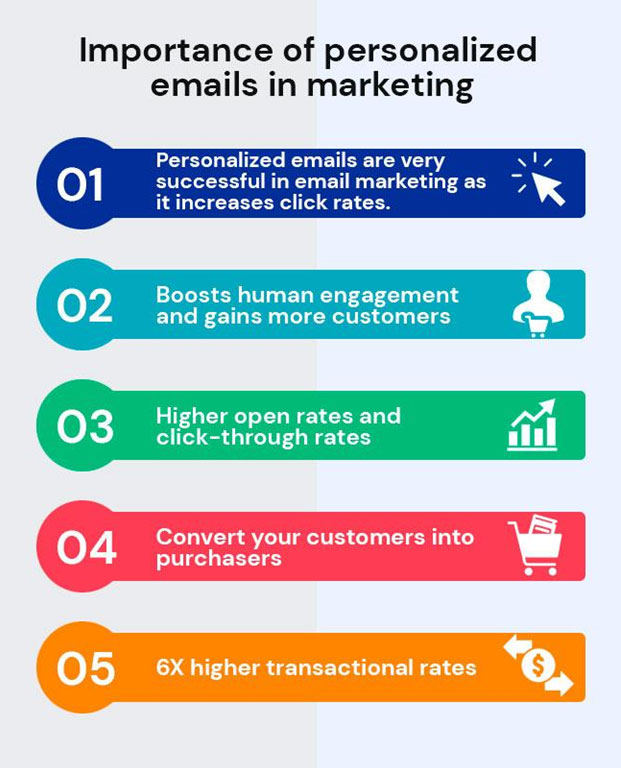
Email marketing personalization is much more intricate than bulk email marketing. While mass emails target a broad audience with the same marketing message, personalized emails are specialized and individualized. Personalized emails can assist businesses in multiple areas, and that’s why their importance is so great.
Enhancing customer experience
In the intricate tapestry of today’s business environment, the pivotal role of customer experience (CX) cannot be overstated. The significance is underscored by a striking statistic: a substantial 52% of customers exhibit a proclivity to sever ties with a brand following a solitary negative customer experience. This illuminates the critical nature of cultivating positive interactions at every touchpoint, with marketing emerging as a paramount CX influencer. Harnessing the power of personalized emails is not just a marketing strategy; it is a cornerstone for enhancing the overall quality of the customer experience.
From the initial touchpoint, where prospects and customers make their first connection with a brand, the impact of personalized emails is profound. It serves as a declarative statement that customers are embarking on a tailored and individualized buying journey. This strategic approach at the outset of the customer journey sets a positive tone for CX interactions. Customers, yearning for a sense of importance and recognition, find reassurance in knowing that they are not mere statistics in a vast clientele base but rather individuals valued by the business.
The act of sending personalized emails transcends mere communication; it is a tangible manifestation of a business investing time and effort to comprehend the desires and wants of its customers. This tailored communication is a powerful tool in positioning a company as one that prioritizes the customer. In essence, personalized emails become a testament to the brand’s commitment to a customer-first ethos. By going beyond generic messaging and demonstrating a nuanced understanding of individual preferences, a company not only sells its products or services but also sells itself as a brand that values and prioritizes the needs of its customers
Increasing engagement and open rates
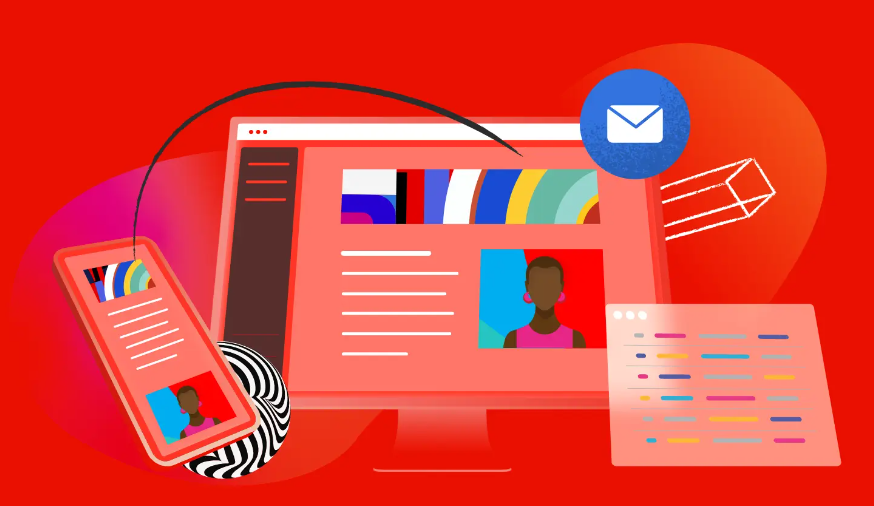
Professionals in America are inundated with an average of 121 emails per day, and the challenge of capturing and maintaining a recipient’s attention is formidable. The sheer volume of emails demands a strategic approach to engagement, and this is where the role of personalization becomes paramount. Attempting to cut through the email clutter with a generic marketing message, devoid of a personalized approach, risks being consigned to the digital purgatory of unread or trashed emails.
The statistics paint a compelling picture: personalized subject lines have the potential to elevate the open rate of an email by a notable 10-14% industry-wide. In the mess of a cluttered inbox, personalized subject lines emerge as beacons of distinction, cutting through the noise and immediately capturing the recipient’s attention. This strategic differentiation is not merely cosmetic; it is a powerful mechanism that prompts users to click, open, and engage with the email’s content.
Beyond merely increasing open rates, personalized subject lines set the stage for a more immersive and engaging experience. The recipient, enticed by the promise of content tailored to their interests, is more likely to invest time in exploring the email’s contents. This not only enhances open rates but also paves the way for increased engagement with the message, whether it be a promotional offer, informative content, or a call to action.
In essence, the incorporation of personalization in email marketing is a strategic imperative in the battle for attention in an oversaturated digital landscape. It is a nuanced and effective approach that goes beyond the superficial, creating a direct line of connection between the sender and the recipient. As marketers grapple with the challenge of standing out in crowded inboxes, the adoption of personalized subject lines emerges as a game-changer, ensuring that emails not only get opened but also leave a lasting impact on the engaged recipient.
Boosting conversion rates

The data from Statista paints a compelling narrative: a staggering 67% of customers actively heed personal recommendations from brands when making purchasing decisions. This statistic serves as a resounding endorsement of the significant impact that personalized suggestions can have on consumer behavior. For retailers, it is a clear directive that users crave personalized interactions, particularly in the form of emails featuring product offers tailored to their specific and current needs.
Consider a scenario where a brand boasts a pool of engaged newsletter subscribers who have expressed interest in certain offerings but have yet to make the leap to an in-person store visit. This juncture represents a prime opportunity for businesses to leverage the potential of personalized emails. By crafting messages that resonate with the unique preferences of these subscribers and align with their current needs, retailers can provide a direct link to desired products or services.
The personalized email strategy transforms into a tailored and strategic engagement. By including links to specific items that resonate with the subscribers’ interests, businesses not only capture attention but also actively guide potential customers toward the products they are most likely to find enticing. This personalized touch acts as a catalyst, motivating subscribers to take tangible actions, such as visiting the physical store or exploring the brand’s online offerings.
Crucially, this personalized approach contributes to a tangible uptick in the overall brand conversion rate. By aligning product recommendations with individual needs and preferences, businesses increase the likelihood of turning engaged subscribers into active customers. The seamless transition from interest to action is facilitated by the strategic use of personalized emails, creating a more direct and purposeful path from consideration to conversion.
Building customer loyalty

Personalizing the end-to-end experience emerges as a linchpin for brands seeking to not only attract new customers but also cultivate unwavering loyalty. The deployment of custom marketing messages, ranging from initial cold emails to routine promotional communications, serves as a tangible manifestation of a brand’s commitment to understanding and meeting the diverse needs of its clientele.
This personalized approach extends beyond the transactional; it is a concerted effort to forge a deeper connection with prospects and customers. By tailoring messages to resonate with the unique characteristics and preferences of different buyers, brands communicate a genuine understanding of their audience. This, in turn, heightens the chance of prospects feeling valued—an essential element in building the foundation of trust in the brand.
Trust, a cornerstone in customer relationships, is a psychological impact of email personalization that retailers can strategically leverage. When recipients perceive a brand as invested in catering to their individual needs, a sense of trust is cultivated. However, the enduring nature of this trust is contingent on maintaining the highest standards in product and service quality. Customers acquired through email personalization are not merely transactional; they represent a potential reservoir of brand advocates who, given a consistently positive experience, are likely to remain loyal and even become brand ambassadors, recommending the brand to others.
Yet, the cultivation of customer loyalty transcends the realm of personalized communication. The power of out-of-the-box acts, such as sending personalized email birthday cards, should not be underestimated. These seemingly small gestures carry a profound impact, creating a sentimental connection that transcends the transactional nature of business. Transforming a subscriber into a loyal brand ambassador, this personalized touch establishes an emotional link that resonates beyond the product or service.
Staying competitive

In today’s hyper-competitive business world, where brands tirelessly vie for the same limited customer attention, the struggle for prominence is particularly pronounced in the retail industry. The challenges faced by retailers in recent years have amplified the intensity of the race for customer attention, making strategic differentiation an imperative for survival.
In this cutthroat environment, marketing personalization emerges as a decisive competitive factor capable of shaping the destiny of a retail brand. At the forefront of this personalized strategy is email marketing, a dynamic channel that, when mastered, positions a brand one step ahead of competitors. The ability to not only grab but also retain people’s attention becomes a strategic advantage in a landscape saturated with marketing messages.
Email personalization allows brands to tailor their messages to the individual preferences, behaviors, and interests of their audience. This level of customization transcends generic communication and enables brands to establish a more intimate connection with their customers. By understanding the nuances of buyer personas, purchase intent, and demographics, brands can strategically segment their email lists. This detailed customer segmentation isn’t just a refinement; it is a potent tool that provides brands with granular data, empowering them to target customers more effectively.
The competitive edge gained through email personalization lies not only in the ability to send targeted messages but also in the capacity to craft personalized experiences that resonate with each segment of the audience. By delivering content that aligns with the unique needs and expectations of specific customer groups, brands can elevate their relevance and responsiveness. In a landscape where customer engagement is a prized asset, the precision offered by personalized email campaigns becomes a cornerstone for success.
Moreover, the granular data derived from effective email personalization doesn’t just facilitate targeted communication; it fuels a continuous feedback loop. Brands can glean insights into evolving customer preferences, allowing for agile adjustments to marketing strategies. In this dynamic interplay, mastering email marketing personalization becomes not just a competitive advantage but a strategic imperative for staying attuned to the ever-changing dynamics of consumer behavior.

Components of email personalization
For a personalized email to be effective, it must have the following features:
Subject line personalization
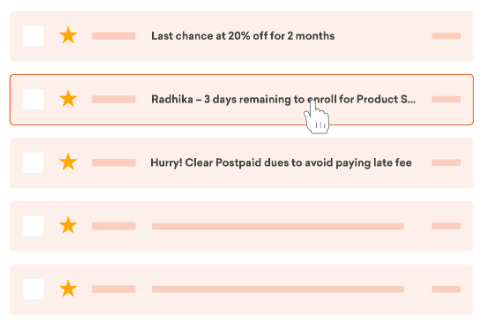
Research indicates that 64% of email recipients will decide whether or not to open an email based on the quality of the subject line. That’s why retailers must personalize their subject lines to entice their recipients to open and read emails.
When you send an email, your subject line and the “from” fields appear first in your recipients’ inbox. Customize your “from” field so that your target recipients know you by name. As a marketer or business owner, adding your official name in the “from” field enhances personalization as subscribers feel they’re communicating with a real person and not a faceless brand. It makes your email feel more conversational and less transactional.
For instance, when sending promotional emails to a large audience, having your name in the “from” field will make your mass emails more personalized. Subscribers who already know you by name will also recognize your email at first glance and be more willing to open and read it.
Retailers can customize the subject line to make it striking and more relevant to their recipients by following these tips:
- Include the recipient’s name: Address the recipient by name to make their email more personal.
- Make it short and catchy: Aim for 50 characters or less and use action words to create urgency.
- Communicate value: Include something valuable to the recipient, like a product discount.
- Mirror the email’s content: The subject line should be relevant to the email’s content and avoid clickbait.
Personalized content
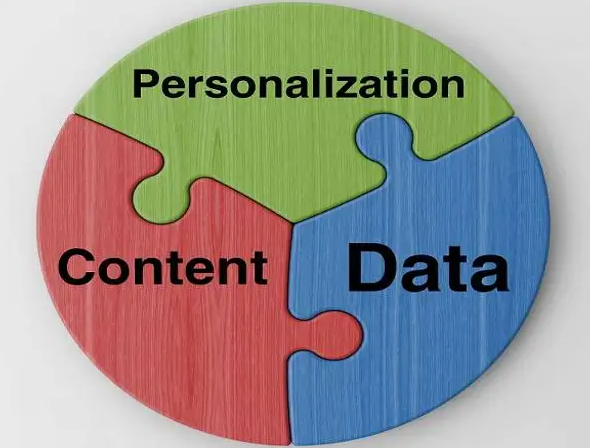
Marketers, in their quest for engagement and relevance, are shifting away from generic content strategies, even when dealing with the same product or service for a diverse customer base. The paradigm shift towards dynamic content emerges as a transformative strategy that enables marketers to swiftly adapt to the distinct needs and preferences of various audiences. Embracing dynamic content is a strategic imperative that recognizes the diversity inherent in every customer base. The essence lies in personalization, and this goes beyond merely inserting a customer’s name into an email. It involves understanding the intricacies of individual preferences, behaviors, and personas to craft content that resonates with each customer on a profound level.
To personalize content effectively, brands must embark on a journey of mapping the customer journey for each persona across multiple channels. This comprehensive approach involves delving into the customer’s interactions at every touchpoint and discerning the type of content that holds the most significance for them. By dissecting the customer journey, brands can uncover valuable insights into the preferences, pain points, and desires of their diverse audience segments. Creating personalized content for each persona, channel, and touchpoint is the natural progression of this insightful mapping exercise. Dynamic content personalization allows marketers to tailor their messaging, visuals, and offers based on the unique characteristics of each customer segment. This agility in content adaptation ensures that the right message reaches the right audience at the right time.
Furthermore, this approach is not confined to email marketing alone; it extends across various channels, including social media, websites, and other customer touchpoints. Consistency in the delivery of personalized content enhances the overall brand experience, fostering a sense of connection and relevance throughout the customer journey. The real strength of dynamic content personalization lies in its ability to cater to the diverse needs of the modern consumer. Whether a customer is at the awareness stage, considering a purchase, or seeking post-purchase support, dynamically personalized content ensures that the brand remains an attentive and responsive companion.
Tailored offers and recommendations
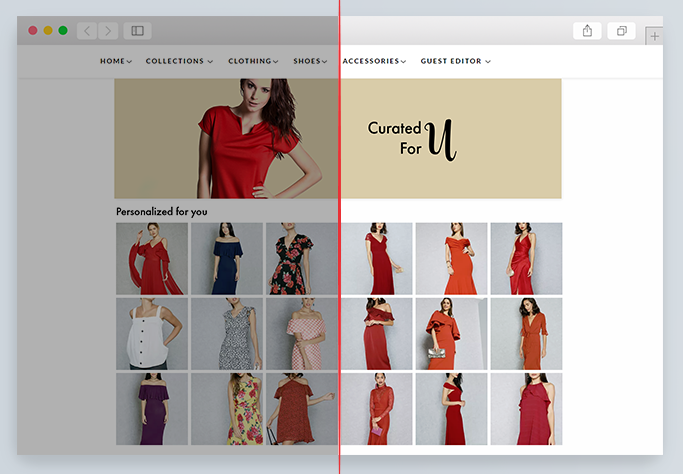
The customer’s journey is a tapestry of interactions and transactions, and the power of email personalization is exemplified through the precision of tailored product recommendations. Retailers, armed with insights derived from customers’ purchase history and browsing behaviors, can curate personalized suggestions that resonate with individual needs, simplifying the buying process and fostering a connection that transcends the transactional.
The key to this strategic approach lies in the ability to scrutinize customers’ purchase patterns and browsing history. By gaining a deep understanding of their preferences, retailers can craft email communications that extend beyond simplistic promotions, presenting products that align with the unique needs and desires of each customer. This thoughtful curation not only streamlines the buying journey but also communicates a profound understanding of customers’ individual preferences.
Customers inundated with choices in the digital marketplace, appreciate the simplicity and relevance that thoughtful product recommendations bring to the table. It transforms the buying process from a potentially overwhelming experience into a personalized journey where the customer feels seen and understood. The impact goes beyond mere transactional success; it fosters a sense of loyalty and trust as customers recognize that the retailer is invested in meeting their specific needs.
Furthermore, the customization of product offers extends beyond recommending the right product; it involves tailoring promotions and discounts to the relevant target audience. Acknowledging that not every offer is universally appealing, retailers must navigate the delicate balance of providing value while avoiding irrelevant or off-putting promotions.
Segmentation and targeting
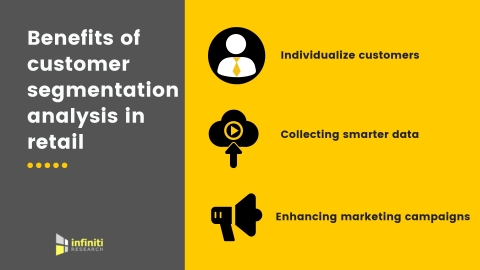
To deliver truly personalized email campaigns, retailers must understand the nitty gritty that makes their customers tick. They should establish interests, hobbies, preferences, and behaviors that shape their customers’ personas. Audience segmentation is the most effective way to gather this granular customer information.
Audience segmentation divides a larger target audience into smaller subgroups based on common characteristics. Through segmentation, brands understand the intricate details of their audience so they can adjust their email personalization marketing more accurately.
For instance, a real estate company on the East Coast may segment its audience into subgroups based on location and income levels. When selling luxury condos in New Jersey, the company would target high-net-worth individuals who work, live, or frequently visit New Jersey. When selling single-family homes in Virginia, the company would target married couples or single parents with well-paying jobs in Virginia.
Timing and frequency
Even the most personalized emails can become a nuisance to recipients if companies spam their inboxes. Also, if marketers delay their emails and schedule them too far apart, they’ll give their competitors a chance to engage their subscribers and probably win them over.
To avoid such pitfalls, retailers must know the right email cadence for their email marketing campaign. Although the right email frequency comes down to the audience’s preference, HubSpot stats indicate:
- The prime time for sending emails to get the most engagement is from 9 a.m. to 12 p.m. on Tuesdays, Mondays, and Wednesdays.
- Weekends (Friday, Saturday, and Sunday) are the worst days to send marketing emails. Weekends register the lowest click-through and open rates.
Also, marketers should consider the time zone of their email recipients so they don’t receive emails during odd night hours when they’re unlikely to open their inboxes.
Email personalization strategies
There’s no one-size-fits-all personalization strategy for email marketing campaigns. That means retailers must have the know-how and flexibility to apply an email personalization strategy where it fits best in a campaign. Here are some of the top strategies brands should consider:
Behavior-based email personalization

Behavioral email marketing involves sending emails based on a customer’s digital behavior. Retailers track how customers interact with their brand online and target them with emails relevant to their last actions. These behavior-based emails are designed to trigger further profitable actions from the customers.
The first step in behavior-based email personalization is tracking consumer actions online. Retailers can track customers’ digital behavior by:
- Leveraging behavior analytics tools like live web analytics features to track website visits and in-store behaviors
- Tracking their audience’s social media behavior using tools like BuzzSumo
- Using an omnichannel solution to analyze customer omnichannel behavior
- Mining and analyzing customer data from their Customer Relationship Management (CRM) system
Customer behavior analysis gives retailers enough data points to personalize their email marketing. Some of the crucial user activity data brands gather include:
- Purchase history
- Browsing devices used
- Exiting a product/service page
- Event registration
- The ads users click and those they block or ignore
- The payment option a user prefers
Such customer behavior data empowers marketers to create personalized emails that help push their customers toward a desired action. For instance, by reviewing the purchase history of customers, brands may realize that some customers complete most of their purchases on specific dates. They would then schedule their marketing emails around that time to subtly cross-sell or up-sell those specific customers.
Demographic email personalization
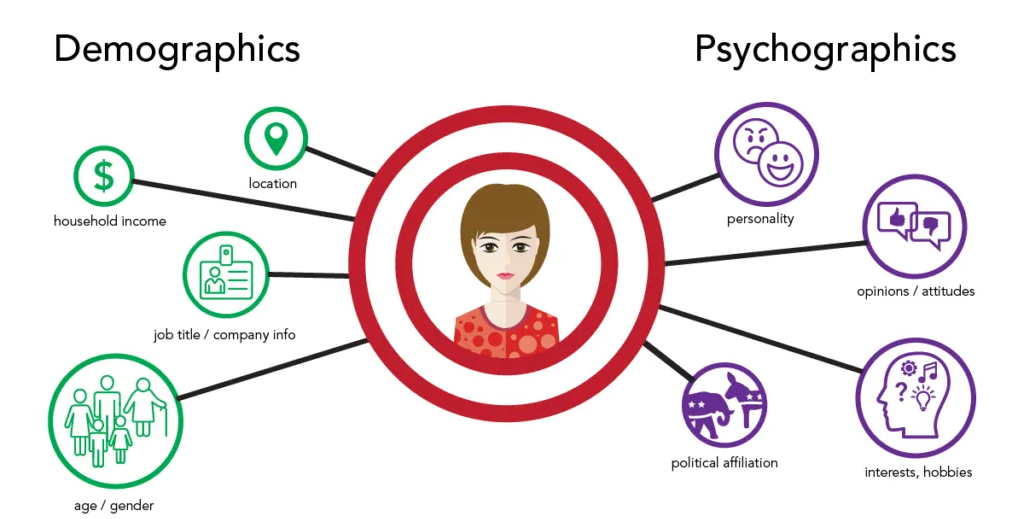
Leveraging demographic information such as age, sex, location, employment status, career, race, education, marital/family status, and income levels presents many avenues of personalization. Creative use of demographic data makes some of the most thoughtful email personalization campaigns.
Here are some of the instances in which retailers can utilize demographic data to curate and send personalized emails to their customers:
- On Mother’s and Father’s Day, marketers can send a congratulatory email with a virtual gift card attached to customers who are parents. Marital and family status data should help a brand segment customers who are parents.
- Retailers that sell products in person and organize events in different locations can use location data to filter customers in the same area and send them personal invitation emails.
- A company that sponsors post-graduate students as part of its corporate social responsibility (CSR) program can use their education level data to send email application links to customers who fit the applicant profile.
Brands that utilize demographic data resourcefully can cultivate customer loyalty and boost sales in the long term through personalized email campaigns. The beauty of demographic personalization is that it gives marketers a creative leeway to personalize emails. As long as they get the timing right and leverage relevant demographic data, they can hyper-personalize email campaigns in the most sentimental ways.
Contextual email personalization
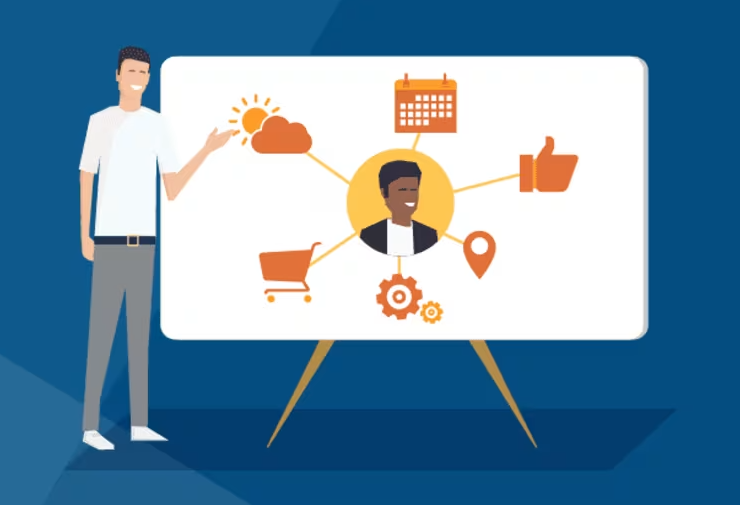
With contextual email personalization, retailers utilize contextual data to craft personalized emails. Contextual data comes from external factors that influence a customer’s purchase behavior or decision. These include weather, time zone, location, devices, and season.
The idea is to use contextual data to design email marketing campaigns that espouse their audience’s current context. For instance, an apparel retailer wouldn’t market cold weather coats during summer because it would be out of context.
Fortunately, technology has made it easy to leverage contextual data to personalize email marketing campaigns. For example, brands can use weather forecast apps to deliver weather-targeted emails to customers as the weather changes.
Through personalized email automation, retailers can schedule different email campaigns to activate depending on the weather changes in a customer’s location. Weather marketing and geotargeted advertising are vital contributors to contextual personalization.
A/B testing for email personalization
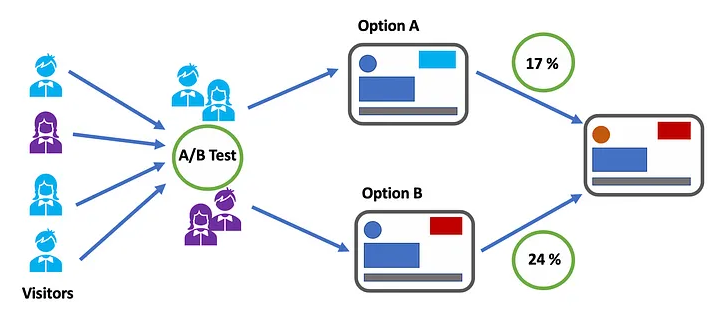
Ultimately, the surefire way to discover the most effective email personalization strategy lies in testing. A/B testing, a widely embraced methodology among marketers, involves the simultaneous deployment of different variations of an email personalization campaign to distinct customer segments. This controlled experiment allows marketers to assess the performance of each variation over a specified period, ultimately unveiling insights into which strategy yields the best results.
A/B testing serves as a robust mechanism for checking the efficacy of various elements within an email personalization campaign. Brand marketers can experiment with different facets such as subject lines, calls to action, the timing and frequency of emails, content length, or even the design of email templates. Each variation represents a hypothesis, and the ensuing analysis of performance metrics provides valuable data-driven insights into customer responses.
The objective of A/B testing is not solely to identify the winning variation but, more importantly, to understand the nuances that drive customer engagement. By comparing open rates, click-through rates, and other relevant metrics, marketers gain a granular understanding of what resonates with their audience. This empirical approach goes beyond assumptions, allowing marketers to make informed decisions based on tangible evidence rather than subjective conjecture.
Other viable email personalization strategies to consider include:
- Lifecycle stage personalization
- Personalized email design
- Interactive emails
- AI-driven personalization
- Personalized email sequences
- Personalized email automation
Latest email personalization trends
Email personalization operates within a dynamic landscape that undergoes constant evolution spurred by technological advancements. Each day witnesses improvements in the technology deployed to track the customer journey, and collect and analyze data, affording brands the ability to discern customer behavior in real-time. Against this backdrop, a spectrum of cutting-edge email personalization trends has emerged:
- Predictive personalization: Traditionally, AI-driven personalization was limited to email product recommendations by leveraging past customer data. However, marketers are now using predictive AI to anticipate customer behavior and integrate it into their email personalization strategies before customers bring it up.
- Cookieless personalization: As Google will finally sunset third-party cookies in 2024, savvy marketers have already stopped relying on third-party data to support their personalization strategies. Today, marketers use zero-party and first-party data to deliver cookieless email personalization.
- Omnichannel personalization: Today’s customers use multiple devices and channels to interact with brands. Marketers must, therefore, follow the customer and deliver personalized email campaigns across all the channels and devices their customers use. Brands can use ContactPigeon’s omnichannel feature for email campaigns to create efficient hyper-personalized campaigns.
- Anonymous user personalization: About 90% of the traffic of a retail website is anonymous, meaning users don’t create accounts or log in. They only browse a retailer’s website and bounce off without converting. New tactics such as in-app messaging, website activity tracking, and cross-channel approach are helping marketers target these unknown users with personalized email campaigns.
Sealing the deal: Mastering the art of email personalization
In a highly competitive retail industry, where brands grapple for consumer attention, mastering the art of email personalization stands as a defining attribute that can set a brand apart from its rivals. The modern customer, shaped by the high personalization standards set by industry giants such as Amazon, Nike, and Sephora, now expects a tailored and individualized experience from all brands. As a result, marketers globally find themselves at a pivotal juncture where the adoption and proficiency in email personalization become not just a strategic advantage but a prerequisite for success in the current and future retail landscape.
Recognizing the need to meet elevated customer expectations, marketers are compelled to embrace email personalization as a central tenet of their strategy. The demand for hyper-personalized communication is not just a trend; it’s a fundamental shift in consumer behavior that necessitates a strategic response. The ability to deliver personalized messages that resonate with individual preferences and behaviors becomes a key differentiator in capturing and retaining customer loyalty.
To streamline and enhance email personalization efforts, marketers can leverage sophisticated tools such as the omnichannel customer engagement platform offered by ContactPigeon. This technology empowers modern marketers with cutting-edge capabilities to create and disseminate hyper-personalized marketing messages seamlessly across all channels. By harnessing the capabilities of ContactPigeon, marketers can not only meet but exceed the personalization standards set by industry leaders.
ContactPigeon’s omnichannel solution offers a comprehensive toolkit for marketers, enabling them to derive deeper customer insights and segment their audience with pinpoint accuracy. This level of precision is paramount in crafting tailored conversion tactics that resonate with specific customer segments. Moreover, ContactPigeon’s behavior intelligence goes beyond manual efforts, automating time- and resource-consuming aspects of campaigns. This automation not only increases efficiency but ensures that campaigns are responsive to real-time customer interactions.
The omnichannel approach advocated by ContactPigeon aligns with the contemporary consumer’s multi-channel engagement habits. By meeting customers where they are, brands can enhance their reach and impact. Whether through email, social media, or other communication channels, ContactPigeon ensures a cohesive and personalized brand experience that transcends individual touchpoints.

Let’s Help You Scale Up

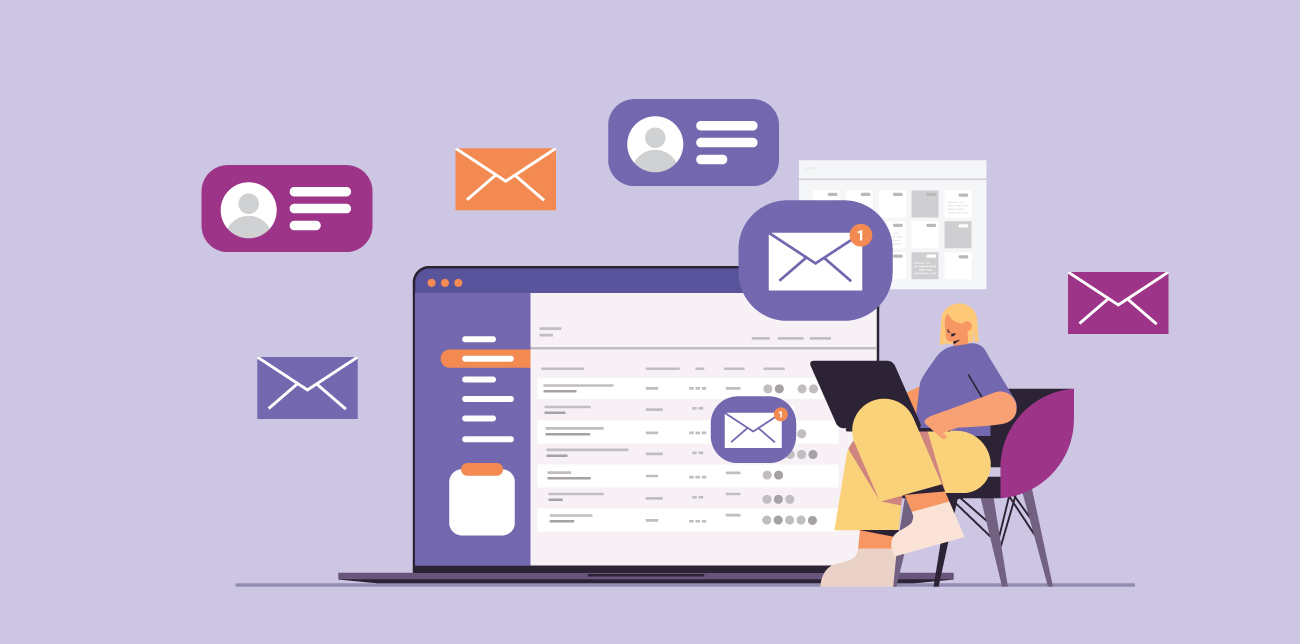

![Benchmarking Growth Strategies of Top Fashion Retailers [Study]](https://blog.contactpigeon.com/wp-content/uploads/2025/11/top-fashion-retailers.jpg)